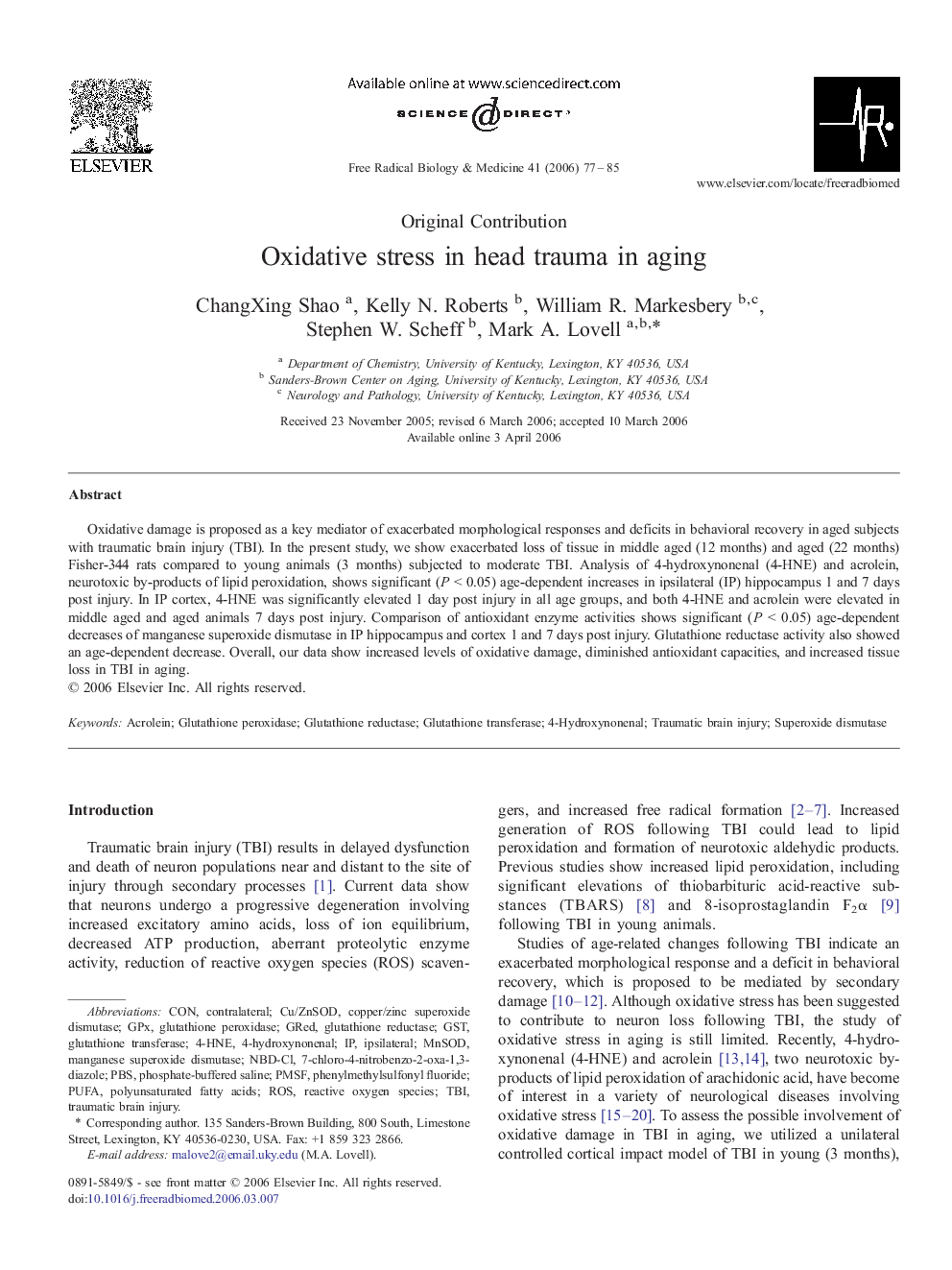| Article ID | Journal | Published Year | Pages | File Type |
|---|---|---|---|---|
| 1911895 | Free Radical Biology and Medicine | 2006 | 9 Pages |
Abstract
Oxidative damage is proposed as a key mediator of exacerbated morphological responses and deficits in behavioral recovery in aged subjects with traumatic brain injury (TBI). In the present study, we show exacerbated loss of tissue in middle aged (12 months) and aged (22 months) Fisher-344 rats compared to young animals (3 months) subjected to moderate TBI. Analysis of 4-hydroxynonenal (4-HNE) and acrolein, neurotoxic by-products of lipid peroxidation, shows significant (PÂ <Â 0.05) age-dependent increases in ipsilateral (IP) hippocampus 1 and 7 days post injury. In IP cortex, 4-HNE was significantly elevated 1 day post injury in all age groups, and both 4-HNE and acrolein were elevated in middle aged and aged animals 7 days post injury. Comparison of antioxidant enzyme activities shows significant (PÂ <Â 0.05) age-dependent decreases of manganese superoxide dismutase in IP hippocampus and cortex 1 and 7 days post injury. Glutathione reductase activity also showed an age-dependent decrease. Overall, our data show increased levels of oxidative damage, diminished antioxidant capacities, and increased tissue loss in TBI in aging.
Keywords
Related Topics
Life Sciences
Biochemistry, Genetics and Molecular Biology
Ageing
Authors
ChangXing Shao, Kelly N. Roberts, William R. Markesbery, Stephen W. Scheff, Mark A. Lovell,
